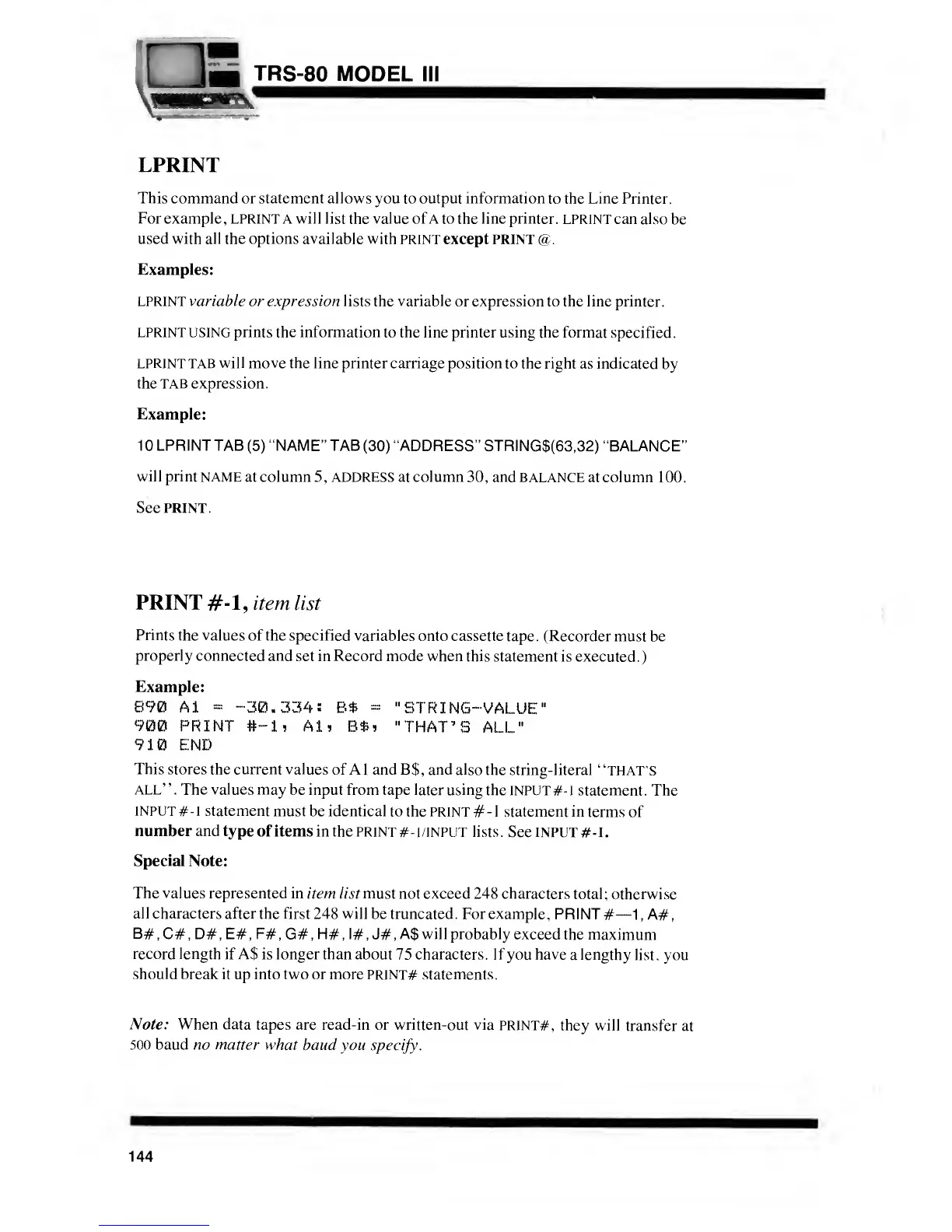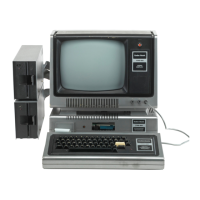TRS-80
MODEL III
LPRINT
This command or statement allows you to output information
to the
Line
Printer.
For example, LPRINT A will list
the
value ofA to
the
line printer,
LPRINT can also
be
used with all the options available with
PRINT except PRINT
@.
Examples:
LPRINT variable or expression lists
the
variable
or expression to the line printer.
LPRINT USING prints the information
to the line printer using the format
specified.
LPRINT
TAB
will move
the line printer carriage position to
the right as indicated
by
the TAB expression.
Example:
1 LPRINT TAB
(5)
"NAME" TAB
(30)
"ADDRESS" STRING$(63,32)
"BALANCE"
will print NAME
at column
5,
ADDRESS at column
30,
and
BALANCE at column
100.
See PRINT.
PRINT
#-1, item
list
Prints
the
values
of the specified variables
onto cassette
tape. (Recorder must be
properly connected and
set in Record mode when this
statement is executed.)
Example:
890 Al
=
-30.334:
B*
=
"STRING-VALUE"
900 PRINT
#-1,
Al) B$i
"THAT'S
ALL"
910 END
This stores the current values
of Al and
B$,
and also
the string-literal
'
'THAT'S
ALL". The values may
be input from tape later using
the INPUT
#-1
statement.
The
INPUT
#
-
1
statement
must be identical to
the PRINT
#
-
1 statement in
terms of
number and type
of items in the print
#-i/input lists. SeelNPUT#-l.
Special
Note:
The values represented in
item list
must
not exceed 248 characters
total; otherwise
all characters after
the
first
248
will
be truncated. For example,
PRINT #—1
, A#
,
B#
,
C#
,
D#
,
E#
,
F#
, G# ,
H#
,
l#
, J# ,
A$ will probably
exceed the
maximum
record length
if A$ is longer than about
75
characters.
If you have
a
lengthy
list,
you
should
break it up into two or more PRINT# statements.
Note: When data
tapes are read-in or written-out via
PRINT#,
they will transfer
at
500 baud no matter
what baud you
specify.
144

